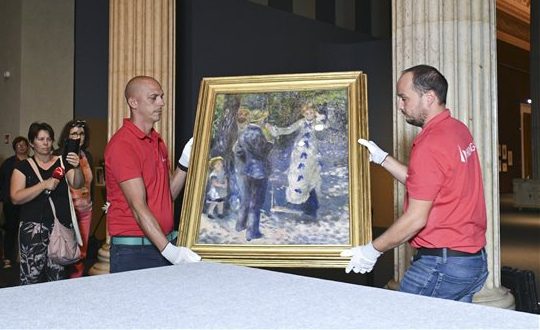
The painting has an estimated value of EUR 57.1 million, but cannot be sold, as it is a French national treasure.Continue reading
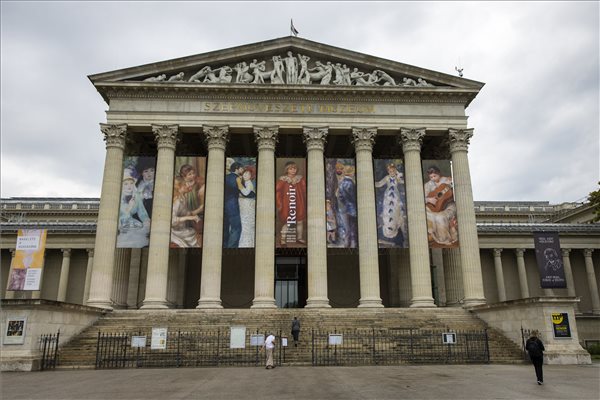
Renoir – The Painter and his Models, an exhibition of some seventy works by one of the most renowned masters of French Impressionism, opens on Friday at the Museum of Fine Arts.
Pierre-Auguste Renoir was an artist of exhilaration, whose palette did not darken even in the most difficult times, said the Director General of the Museum of Fine Arts at the exhibition’s press launch. László Baán stressed that this is the first time that a large-scale exhibition covering the entire oeuvre of Pierre-Auguste Renoir is opening in Hungary, but such an exhibition is rare anywhere in the world.
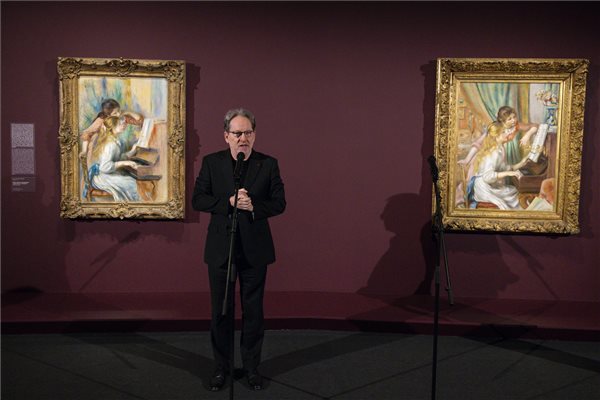
Director of the museum László Baán during the opening of the exhibition. In the background: Young Girls at the Piano. Photo via MTI/Hegedüs Róbert
As he recalled, with the support of the government,
in 2019, the museum succeeded in acquiring Renoir’s painting Naked Woman Couchée (Gabrielle), the museum’s most valuable acquisition of the last hundred years.
Painted in 1903, the work is part of a series of three pieces, so the idea was raised to exhibit it with two other pairs of works for the first time ever, he noted.

A separate unit presents Renoir’s nudes. Naked Woman Couchée (Gabrielle). Photo via MTI/Hegedüs Róbert
In cooperation with the Musée d’Orsay in Paris and the Musée de l’Orangerie, it was not only these two paintings that were loaned for the Budapest exhibition:
a total of some 70 Renoir works from more than 20 public collections are on display at the museum.
Cécile Girardeau and Paul Perrin, the French curators of the exhibition, pointed out that the Museum of Fine Arts had collected the highlights of Renoir’s long career.

The Clown. Photo via MTI/Hegedüs Róbert
The exhibition also shows Renoir’s relationship with tradition: he was an innovator, and experimented with many techniques over a career spanning six decades.
This is the most beautiful Renoir exhibition I have ever seen,”
said Perrin.
Zsófia Anna Kovács, the Hungarian curator of the exhibition, pointed out that although Renoir is rightly considered one of the greatest figures of Impressionism, the exhibition at the Fine Arts presents his early, pre-Impressionist works as well as his later, more classicist works.
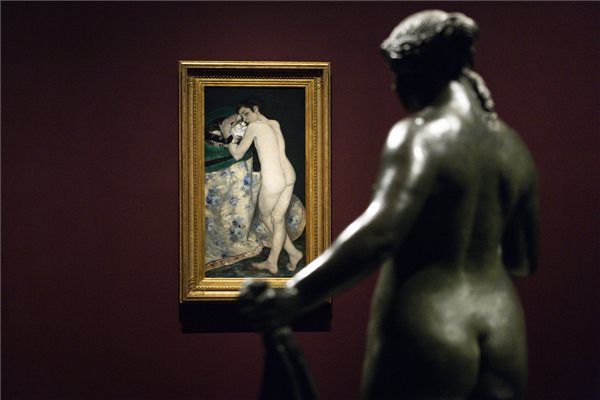
Young Boy with a Cat. Photo via MTI/Hegedüs Róbert
The first unit looks at Renoir’s portraits, including the master’s few self-portraits. These works depict fellow artists and their relatives such as Frédéric Bazille, Claude Monet, and many others.
The Landscape and Life section traces the development of Impressionism in Renoir’s canvases, for example, in major works such as La Grenouillere or The Swing. The landscapes and sketches evoking the hustle and bustle of the Moulin de la Galette all show that
Renoir’s interest was focused on the beauty of modern life, capturing social scenes and flirtation, and on the innovative capture of light effects,”
emphasized Kovács.
She added that the more graphic style of the painting of the Dance in the Country, also one of his major works, points to a later, more classical period. With the birth of his children, motherhood, family scenes, and portraits of children, the tranquillity of the home and intimate interiors became the painter’s favorite subjects.

Dance in the Country. Photo via MTI/Hegedüs Róbert
It is little known that the elder Renoir turned in part to sculpture in the 1910s, although he needed help to cast his designs in bronze. Two of the twenty or so sculptures he completed (Venus Victorious and Water (Large Laundress)) are also on display.
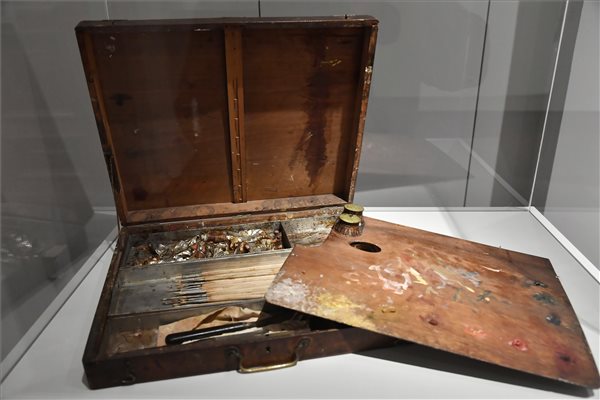
Pierre-Auguste Renoir’s paint box and brushes. Photo via MTI/Lakatos Péter
The Bathers, completed in 1919, is Renoir’s last major work, and can be seen as a summing up of his oeuvre.
The final room of the exhibition highlights Renoir’s works previously held in private collections in Hungary and exhibited in Budapest, and visitors can also watch a film about the old master.
The exhibition is on display at the Museum of Fine Arts from Friday to January 7, 2024.
Via MTI, Featured image via MTI/Hegedüs Róbert